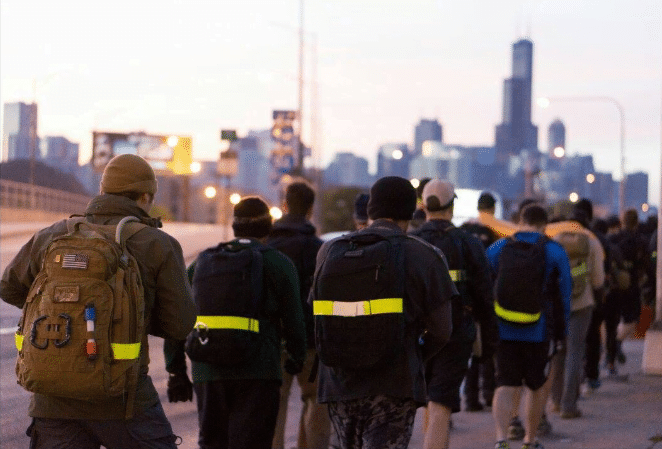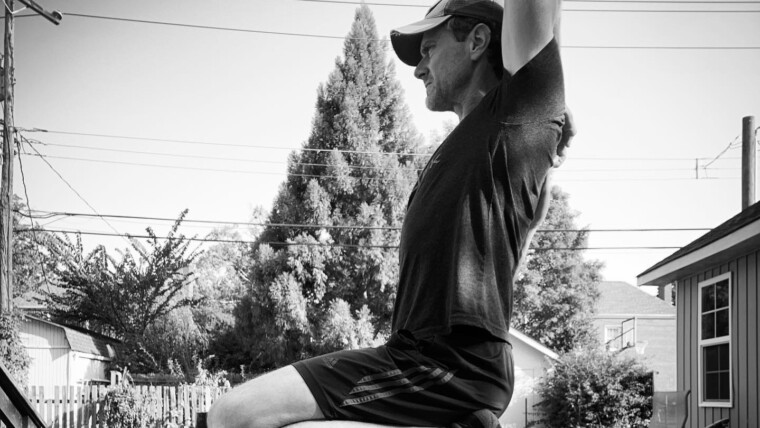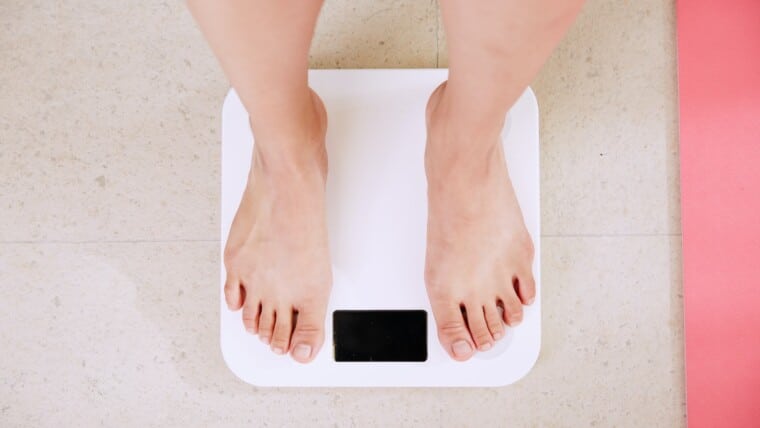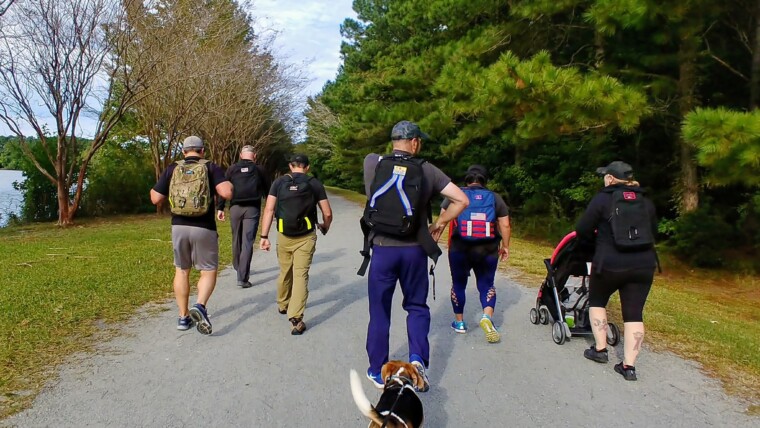A concern sometimes expressed when people learn about rucking revolves around back safety.
While the idea of adding a bunch of weight into a backpack and going for a long walk might sound risky to some, the reality is that when done properly rucking is safe for your back and will actually increase overall back safety by strengthening core, shoulder, posterior chain, and back muscles.
Add a rucking workout on top of that, and you’re on your way to a well rounded exercise program for whole body health.
Choosing the Right Weight for Back Safety When Rucking
Most back injuries occur in rucking because a person has added more weight than their body can handle.
Just like a person who has never lifted weights shouldn’t plop down on a bench and attempt to bench press 150 pounds, a person new to rucking should begin with a relatively light weight (10-20 pounds) and build strength and endurance before moving to heavier weights.
If you are new to rucking, here is a training program for new ruckers that helps you build in load and distance over several weeks.
Building load gradually, over the course of weeks, will help ensure your back stays safe while rucking.
Proper Weight Distribution Increases Back Safety When Rucking.
When we talk about weight distribution for back safety when rucking there are two areas of consideration. First, where is the weight distributed within the ruck and, second, how is the weight distributed on the rucker’s body.

The ideal location for weight within your ruck is close to the body and higher in the ruck. The further from your body and lower in the ruck the weight is, the more you will be prone to an unnatural position that compromises your back position.
When rucking for fitness, we recommend using a ruck plate as your weight. The size and shape of the ruck weight ensure that it can be loaded close to your body.
For distribution, it can be helpful to add a hip-belt to your ruck. The addition of a hip belt allows the weight of your ruck to be distributed between both your shoulders and your hips. This redistribution of weight can assist in potentially overloading the shoulders and creating too much stress on the back.
Protecting Your Back When Putting On and Taking Off Your Ruck.
Because most people don’t think much about it, perhaps the greatest risk for back injury is when you put on and take off your ruck. Pulling a heavy load from the ground, swinging it around your body and onto your shoulders, or flipping it around after a long ruck when you’re tired and flopping it to the ground provides great opportunity for injury.
To prevent back injury when putting on and taking off your ruck, ensure that you move with purpose. When pulling form the ground, brace your core to prevent rounding your back. As you lift the ruck, bring your dominate foot forward a little bit and rest the ruck on your upper thigh. From here, reach your arm through the first strap and carefully shift the ruck around to your back, again bracing your core through the movement.
When removing your ruck, simply reverse the movements above, moving with purpose and engaging the core.
Rucking Is NOT Bad For Your Back
Rucking is actually quite good for your back when done properly. Developing muscles by building in load over time, distributing weight properly, and using proper form when putting on and taking off your ruck will ensure back safety. Rucking regularly will build muscles in your core, shoulders, legs, posterior chain, and back, ensuring not just a safe back while rucking, but developing your muscles for overall long-term back health.







